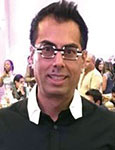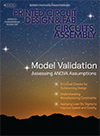Features Articles
 We left off last month commenting on the effects of Covid-19 on the supply chain and offering questions – and some opinions – on what might happen next. Interestingly, the real ugliness might not have hit yet. Anticipating the traditional supply drop-off during the Chinese New Year, most companies boosted inventories ahead of time. By the time China turned the lights back on, in late February/early March, the West was starting to slow, leaving stocks in a relatively decent position.
We left off last month commenting on the effects of Covid-19 on the supply chain and offering questions – and some opinions – on what might happen next. Interestingly, the real ugliness might not have hit yet. Anticipating the traditional supply drop-off during the Chinese New Year, most companies boosted inventories ahead of time. By the time China turned the lights back on, in late February/early March, the West was starting to slow, leaving stocks in a relatively decent position.
So far, so good.
Where China will feel it most, I think, is over the next two months, as Western demand lags and China’s domestic-based suppliers pull back so as not to overstuff the supply chain. Already, we are starting to see some layoffs in Southeast Asia. If that region has to sustain another wave of Covid-19, look out. The chain could be in for a wild ride.

Ramp the advertising programs and support them with content tied to sales efforts.
In my last column, I discussed the communications strategies that were most important as Covid-19 began to change our working lives. This month, I look at communications strategies that will be most important as we resume the new normal working world.
As I write this (Apr. 16), the strategy for reopening businesses is just being formulated. From everything I’ve seen reported, it appears the strategy will be a rolling relaxation of restrictions, which means geographic advantages for companies in places that either had minimal infection rates or have successfully flattened their curves. Rolling increases of restrictions are also likely if a region starts to see new spikes in infections.

Is a wet cycle necessary after every print? Maybe not.
In the previous installment of screen printing hacks, we discussed some proven workarounds for alignment issues. This month – and based on some recent customer observations – the advice centers on understencil cleaning, how lack of control can adversely impact this sub-process of printing and the overall result, and a few suggestions for correcting the problems.
Here’s the backstory: A customer printing very small dimensions – 200µm square apertures with spaces of 130µm, on average – was experiencing sub-4 Sigma results on some NPI designs. Transfer efficiency was low, and there was a large standard deviation across devices and the PCBs, so a lot of inconsistent paste-on-pad volume. Our team developed new stencil designs and tested them in a lab environment with our SPI, yielding excellent results. After making some machine calibration adjustments onsite at the customer and integrating the new stencils, however, there still wasn’t tremendous uptick in the process; improvement was observed but not at the expected level. Let the troubleshooting continue! We turned our attention to the cleaning process.

More lasers and improved and integrated software have factories humming.
The methods and equipment used to fabricate PCBs are becoming increasingly advanced and centralized. For example, computers, lasers, and AI are ever more common in all areas of PCB processing. In recent years, a considerable number of PCB manufacturers have invested heavily in the integration of the complete shop, with all equipment controlled by one central computer. The interconnection enables quicker file processing, higher accuracy, and improved yields.
One of the most expensive pieces of production equipment is the laser-direct imaging system (LDI), which has made significant improvements in accuracy, speed, quality, and in reducing overall manufacturing rejects. The newer models feature multiple cameras to locate lamination holes, compare them to the original Gerber file, then digitally scale the image to fit the panel. Newer laser imagers are capable of imaging down to 15µm line widths and spaces.

Will the latest pandemic spur mass change in communications?
Global events sometimes become the catalyst for widespread change. In the world of technology, Covid-19, also known as the coronavirus, may be such an event.
Over the decades our industry has been an integral part of developing, refining and establishing many cost-effective and reliable technologies, perhaps best illustrated by improvements in communications. These improvements have not just been about broadcasting voice with higher fidelity in smaller packages, or integrating photography into word processing software, with easier user interfaces. Thanks to technology, the world of communications has been developing into much more: real-time, interactive, and transportable.
The combination of higher capacity data storage in smaller and far less expensive packages and fast and reliable wireless bandwidth, available virtually anywhere, matched with camera and microphone technology that makes the smallest device sound crystal clear and picks up the smallest sound or sight from incredibly long distances, is just part of the dramatic evolution of communications technologies.

Remember 2010?
That year, a massive earthquake in the Pacific Ocean led to a tsunami of biblical proportions. Much of Japan’s semiconductor and electronics manufacturing industry was taken offline for nearly two months.
About 12 months later, it was Thailand’s turn in the wringer. The so-called 100-year floods swamped most of the country, causing nearly $50 billion in damage. In doing so, they took out major assembly operations at Fabrinet, Benchmark Electronics, Kimball and SVI, among others, upsetting a major link in the auto electronics and optical component supply chains.
Covid-19 has hit the electronics supply chain with all the force of those two natural disasters. The industry response will be fascinating.
This is the ultimate stress test. Coming on the heels of the Chinese New Year, where employees had not yet returned to work, the shutdown lasted four to six weeks in China. It’s a double whammy.
Press Releases
- Altus Partners with Sellectronics to Enhance Manufacturing Capabilities with PVA Delta 8 System
- ITW EAE Celebrates Major Milestone in Domestic Manufacturing Expansion
- Micro Technology Services Selects PBT Works CompaCLEAN III for Advanced PCB Cleaning Performance
- Indium Corp. is Electrifying the Future with Advanced Materials Solutions at Productronica


